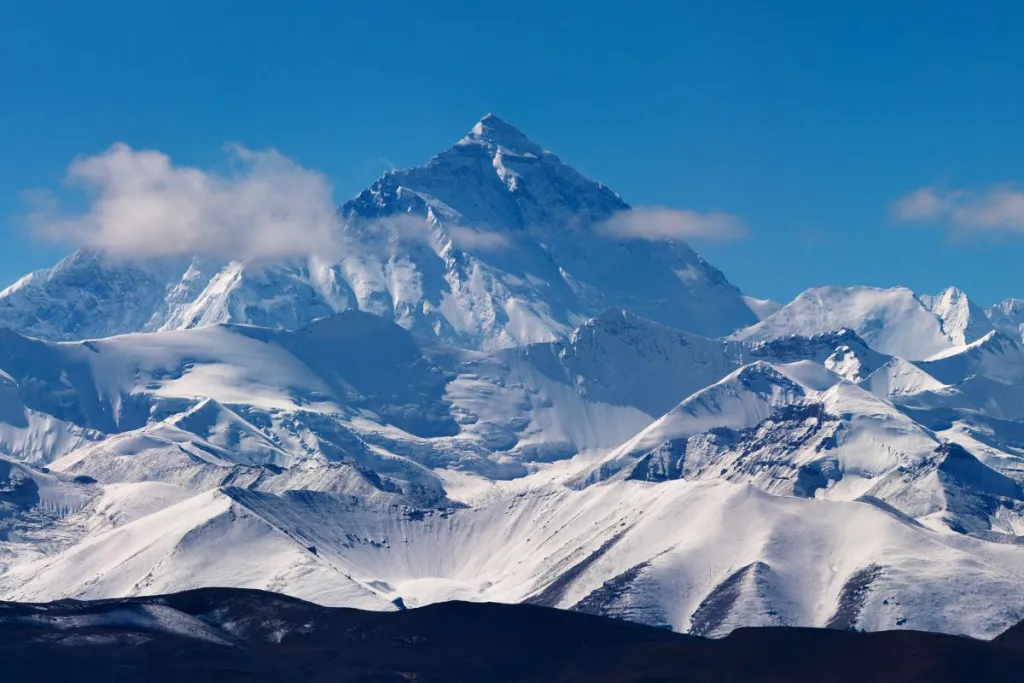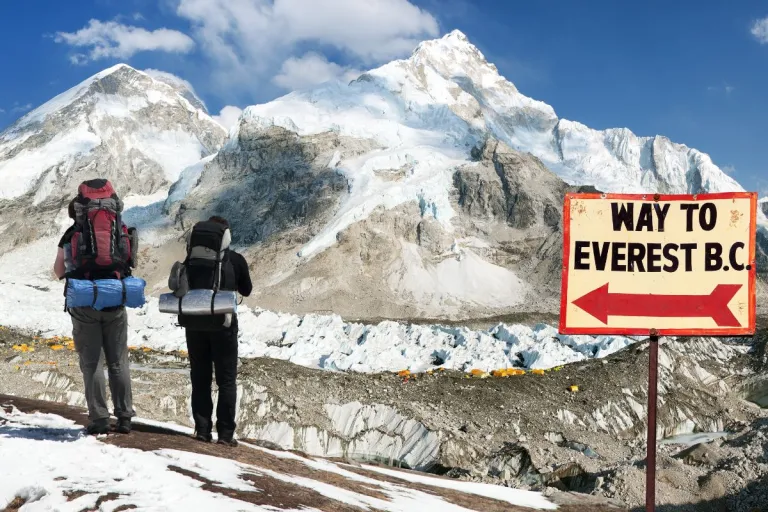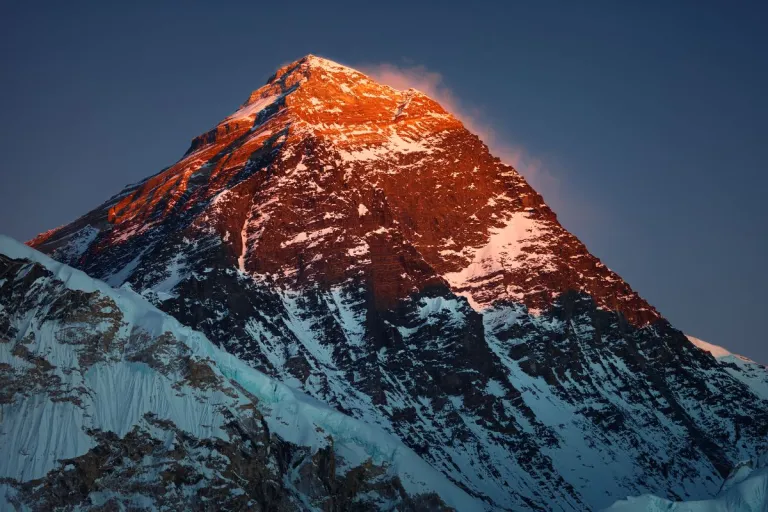Kowloon offers halal‑certified options for every craving Muslim travellers!
Mount Everest: The World’s Highest Point Was Once a Seafloor?

When we think of Mount Everest, we imagine snow-capped peaks, fearless climbers, and the highest point on Earth touching the heavens. But did you know that the summit of Mount Everest was once part of the seafloor of an ancient ocean? Yep, the world’s rooftop used to be underwater!
Also read: Top 7 Muslim-Friendly Water Sports Destinations in Southeast Asia [2025 Guide]
A Peak Born from the Sea
Millions of years ago, what we now call Mount Everest was lying beneath the waves of the Tethys Ocean. As tectonic plates shifted and collided — specifically the Indian plate crashing into the Eurasian plate — oceanic rocks, marine fossils, and sediments were slowly pushed upward, eventually forming the Himalayas.
Today, Everest stands at an awe-inspiring 8,848.86 meters (29,031.7 feet) above sea level. And here’s the cool part: fossils of ancient sea creatures like trilobites and ammonites have been found near the summit, a surreal reminder that this towering mountain once lay deep beneath the ocean.
For Muslim travellers with a love of nature, science, and epic stories from the Earth’s past, this is a breathtaking example of Allah’s creation, where geological wonders meet spiritual awe.
“And the mountains, He has set firm.” — Qur’an 79:32
Visiting Mount Everest as a Muslim Traveller
 Image credit: Daniel Prudek | Canva Pro
Image credit: Daniel Prudek | Canva Pro
No, you don’t have to climb to the summit (unless you're an elite mountaineer!), but the Everest Base Camp trek in Nepal is an unforgettable adventure that’s accessible to more travellers, including Muslim adventurers.
Here’s what you should know:
Halal-friendly travel: While halal food may not be widespread in the remote trekking regions, it’s possible to request vegetarian meals or bring halal snacks from Kathmandu. Some Muslim-friendly restaurants and stores can be found in the capital city.
Prayer on the trail: Trekkers often find quiet, scenic spots to perform prayers along the route. Just imagine making sujood surrounded by snow-covered peaks — a humbling experience.
Best time to go: Spring (Mar to May) and autumn (Sep to Nov) offer the best weather and clearest views of Everest.
The Spiritual Side of the Mountains
 Image credit: straga | Canva Pro
Image credit: straga | Canva Pro
There’s something deeply spiritual about standing before Everest, whether from a viewpoint like Kala Patthar or during a scenic flight over the Himalayas. The sheer size and majesty of this mountain — once part of the ocean floor — remind us of the wonders of creation and the powerful forces that shape our planet.
For Muslim travellers seeking more than just Instagrammable moments, Mount Everest is a destination that speaks to the heart, mind, and soul.
Also read: 5 Must-Try Activities at Rong May Cloud Bridge, Sapa For Muslim Travellers
Final Thoughts
Mount Everest isn’t just about adventure; it’s a natural marvel that tells an ancient story, from sea to sky. Whether you’re hiking through Sherpa villages, reflecting by a glacier, or simply learning about the mountain’s past, Everest offers a unique journey for every traveller.
So if you're planning your next big halal-friendly adventure, consider this: the world’s highest peak is also one of its most humbling stories — and it's waiting for you.
Published at
About Author
Aimi Zulkiflee
Subscribe our Newsletter
Get our weekly tips and travel news!
Recommended Articles
15 Best Halal Foods in Kowloon, Hong Kong 10 Best Halal-Friendly Destinations in The Philippines for Muslim Travellers Not just Boracay...
10 Best Places for Muslim Travellers to See Tulip Festivals in 2025 Fun Fact: Tulips didn’t actually come from the Netherlands but Türkiye!
10 Halal Anime Food Guide for Muslim Travellers in Japan Muslim-friendly versions of popular anime dishes across Japan!
Top 10 Popular Muslim-Friendly Destinations to Visit in 2025 Our schedules are packed, buddies!
Latest Articles
Umrah & Beyond: Must-Visit Tourist and Historical Sites in Makkah and Madinah spiritual, historical, and even modern attractions in Makkah and Madinah that are truly captivating!
The Best Spots to Watch New Year's Fireworks in Singapore Happy New Year, may 2026 start off with a spectacular start!
Explore the Real-Life Filming Locations of Netflix’s Frankenstein A peek through the Netflix’s Frankenstein filming locations in Scotland, England & Toronto
Here’s Why Malaysia Tops Asia in English Proficiency Penang, Kuantan and Kuala Lumpur named as top 3 cities with highest English proficiency mark!
19 Halal Foods in Amsterdam You Can't Miss Breakfast/brunch spots like Simit Sarayi, Broodje Mevrouw, or Moroccan Bakery Sud are great for early starts.

